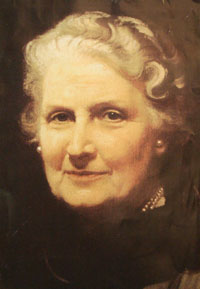Maria Montessori system
Dr. Maria Montessori, the first woman in Italy to earn her physician’s degree, developed the educational model that bears her name while teaching a class of 50 poor students on the outskirts of Rome in 1907. Dr. Montessori, who previously worked with special needs students, rejected the notion that children were born as “blank slates”. Rather, she believed that children were born with absorbent minds and were fully capable of self-directed learning. Montessori developed the framework for a prepared educational environment in which children, empowered with the freedom to choose how they would spend their time in school, would seek out opportunities to learn on their own. Her pioneering work formed the basis for the Montessori classroom, which endures primarily in preschool and elementary school settings today.
Montessori believed that children enjoyed and needed periods of long concentration and that the traditional education model, with its structured lessons and teacher-driven curriculum, inhibited a child’s natural development. Montessori students are free to spend large blocks of the day however they choose, while the teacher, or director, observes. Dr. Montessori was a major proponent of tactile learning. Classic materials, such as the Pink Tower, Brown Stairs, and the Alphabet Box “a set of wooden letters that children are encouraged to hold and feel before learning to write ” remain staples of Montessori classrooms.
The lack of grades, tests, and other forms of formal assessment helps ensure that classes remain non-competitive. The first Montessori school in the United States was opened in Tarrytown, New York, in 1911. Today, the Montessori method is employed in roughly 5,000 schools in the U.S., including several hundred public schools. A 2006 study comparing outcomes of children at a public inner-city Montessori school with children who attended traditional schools provided evidence that Montessori education leads to children with better social and academic skills.

